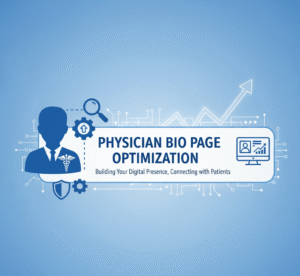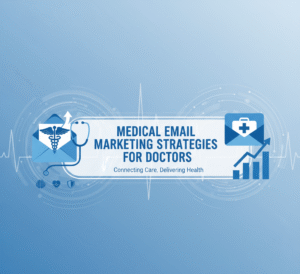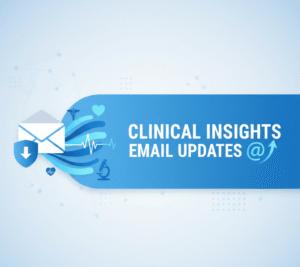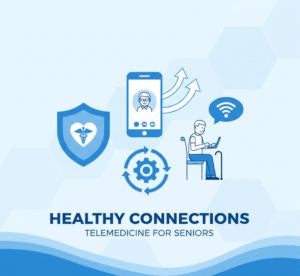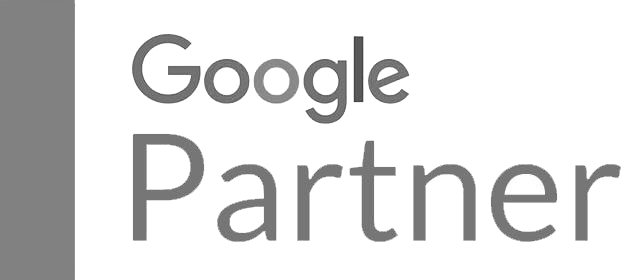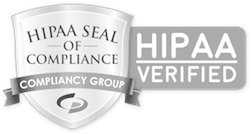“Discover dentistry website conversion optimization strategies! Learn how effective CTAs, from appointment buttons to lead forms, optimize your site for new patients.”
Is your dental website working as hard as it should be? Or is it more of a digital brochure than a patient-generating machine? Many dental practices invest in beautiful websites, but they often overlook a crucial element: the call-to-action (CTA). These powerful little phrases and buttons bridge a casual visitor and a booked appointment.
This isn’t just about looking good. It’s about getting results. In the competitive world of dentistry, your website needs to do more than just exist. It needs to convert. This article dives deep into the art and science of effective CTAs for dental websites. We will explore how well-placed and compelling CTAs can drastically improve conversion rates. We’ll give practical examples of appointment buttons, lead forms, and persuasive copywriting techniques. Finally, we’ll discuss how services like Invigo Media’s website design and optimization can help your practice turn site visitors into loyal, booked patients.
Keep reading if you’re ready to transform your dental website from a static page into a dynamic growth engine. This guide is for you.
The Power of the CTA: Why Your Dental Website Needs Them
Think of your website as a digital storefront. You want people to walk in, browse, and ultimately, buy something. In the dental world, “buying something” means booking an appointment, filling out a form, or inquiring. Without clear CTAs, your visitors are left wandering. They might appreciate your services, but won’t know what to do next.
A well-crafted CTA guides your visitor. It tells them precisely what action you want them to take. This isn’t about being pushy. It’s about being helpful. You’re making it easy for potential patients to connect with you. This simple guidance makes a huge difference. It directly impacts your dentistry website conversion optimization.
Consider the patient journey. Someone might land on your site looking for a new dentist, have a specific problem, like a toothache, or explore cosmetic dentistry options. Each scenario requires a clear path forward; your CTAs provide that path.
What Makes a CTA Effective?
It’s not enough to just have a button. A compelling CTA has several key characteristics:
- Clarity: The message is crystal clear. No ambiguity.
- Conciseness: Short and to the point.
- Action-Oriented: Uses strong verbs that tell the user what to do.
- Prominent: Easy to see and find.
- Benefit-Driven: Hints at what the user will gain by clicking.
- Urgency (where appropriate): Creates a sense of immediate need.
Neglecting these elements means missing out on potential patients. You’ve invested time and money in your website. Make it work for you. Every visitor is a potential patient. Don’t let them slip away because they couldn’t find the “next step.”
Dental CTA Best Practices: Guiding Your Patients
Now, let’s get into the nitty-gritty. What are the best ways to implement CTAs on your dental website? It goes beyond just a “Contact Us” button. It involves strategy, placement, and persuasive language.
Placement, Placement, Placement
Where you put your CTAs matters. A lot. They need to be visible without being overwhelming.
- Above the Fold (Hero Section): Visitors first see this. Your primary CTA should be here. Think “Schedule Your Appointment” or “Book a Free Consultation.” Make it stand out.
- Throughout Service Pages, place relevant CTAs as you describe specific services (e.g., teeth whitening, dental implants). After explaining the benefits of teeth whitening, a “Brighten Your Smile Today!” button makes perfect sense.
- Blog Posts: If you write informative blog posts, include CTAs within or at the end. For example, a “Schedule a Gum Health Check-up” CTA is highly relevant. After a post about gum disease
- Footer: A common practice. Include your main CTAs in the footer as a last resort for users who have scrolled through your page.
- Pop-ups and Slide-ins (Used Sparingly): These can be effective, but must be used carefully. A well-timed pop-up offering a discount on a first cleaning can work, but an aggressive, immediate pop-up will annoy users.
Remember, the goal is to make it easy. Don’t make visitors hunt for the next step.
Design Matters: Making Your CTAs Pop
The visual design of your CTA is crucial. It needs to stand out from the rest of your page content.
- Color Contrast: Use a color that contrasting with your website’s background but still fits your brand. Don’t blend in. Make it pop.
- Button Size and Shape: Make buttons large enough to be easily clicked on both desktop and mobile. Rounded corners often feel more inviting.
- White Space: Give your CTA room to breathe. Don’t clutter it with surrounding text or images. This draws the eye directly to it.
- Clear Call to Action: The text on the button itself must be unambiguous. “Click Here” is weak. “Book Your Cleaning” is strong.
- Microcopy: Sometimes, a tiny bit of extra text near the CTA can add reassurance or a benefit. For example, below a “Schedule Now” button, you might add “Easy Online Booking.”
These design elements guide the eye. They signal importance. They tell the user, “This is what you should do next.”
Dentist Appointment Button Examples: Direct Paths to Conversion
The “Book Appointment” button is arguably the most critical CTA on a dental website. Let’s look at some effective variations and what makes them work. These are examples of our primary dentist appointment button.
- “Schedule Your Appointment Today!”
- Why it works: Direct, action-oriented, and creates a subtle sense of urgency.
- “Book Your New Patient Exam”
- Why it works: Specifically targets new patients, making the offer clear.
- “Request an Appointment”
- Why it works: It implies a quick, easy process and lower commitment than “scheduling.”
- “Get Your Brighter Smile – Book Now!”
- Why it works: Combines a benefit (brighter smile) with the action.
- “Call Us Now to Schedule!”
- Why it works: It provides an immediate option for those who prefer phone calls. Include the phone number alongside this.
- “Free Consultation – Book Yours!”
- Why it works: Highlights a no-cost entry point, reducing perceived risk.
- “Emergency? Call Now!”
- Why it works: It is crucial for urgent care; it must be obvious, perhaps even with a sticky element on the page.
Link these buttons to your online scheduling system or a dedicated contact form. The fewer steps, the better. Remove any friction in the process.
Beyond the Appointment: Other Key CTAs
While appointments are paramount, other CTAs serve different purposes in the patient journey. These are vital for dental landing page CTAs and overall conversion.
- “Download Our Free Guide on Oral Health”
- Purpose: Lead generation. Offers value in exchange for an email address.
- “Meet Our Team”
- Purpose: Builds trust and rapport by introducing the dental professionals.
- “View Our Services”
- Purpose: Guides users to explore what your practice offers.
- “Read Patient Testimonials”
- Purpose: Social proof. Encourages trust by showing positive experiences.
- “Get Directions to Our Clinic”
- Purpose: Practical help for those ready to visit.
- “Follow Us on Social Media”
- Purpose: Builds community and keeps your practice top-of-mind.
- “What to Expect on Your First Visit”
- Purpose: Addresses common anxieties, prepares new patients.
Each serves a purpose. They move visitors through the clinic website user journey, answer questions, provide information, and build confidence. Think about the various needs of your potential patients. Then, create CTAs that address those needs.
Dental Landing Page CTAs: Focused Conversion Funnels
Landing pages are special. They are designed for one purpose: conversion. Whether it’s for a specific marketing campaign (e.g., a special offer on teeth whitening) or a Google Ad, your landing page needs highly focused CTAs.
- Singular Focus: A landing page should generally have one primary CTA. Multiple CTAs can confuse visitors and reduce conversion rates.
- Above the Fold: Your primary CTA must be immediately visible without scrolling.
- Repetition (Strategic): If the content is long, you can repeat the primary CTA further down the page, but don’t introduce new, competing CTAs.
- Benefit-Oriented Language: The CTA and surrounding copy should clearly state the benefit of taking the action. “Get 20% Off Your First Cleaning – Claim Offer Now!”
- Trust Signals: Near your CTA, include trust elements like testimonials, security badges, or a guarantee (if applicable). This reduces anxiety.
For instance, if you have a landing page for clear aligners, your CTA shouldn’t be “Contact Us.” It should be “Start Your Smile Transformation – Get a Free Consultation!” This is specific, benefit-driven, and action-oriented.
Dental Form Design: Converting Interest into Leads
Forms are often where the rubber meets the road. A well-designed dental form turns an interested visitor into a tangible lead, while a poorly designed one will cause them to abandon the process.
Keep it Simple, Stupid (KISS Principle)
- Minimal Fields: Only ask for essential information. Name, email, phone number, and a brief message field are enough. The more fields, the higher the abandonment rate.
- Clear Labels: Make sure each field has a clear, understandable label.
- Logical Flow: Arrange fields logically—Group related information.
- Progress Indicators: For longer forms (rare in dentistry), show progress (e.g., “Step 1 of 3”).
- Mobile Responsiveness: Forms must be easy to fill out on a smartphone: large touch targets, simple input fields.
Beyond Basic Fields: Enhancing the Experience
- Pre-fill Options (where possible): If a user is logged in or you have some information, pre-fill fields will save them time.
- Dropdown Menus for Specific Services: Instead of a free-text “reason for visit,” provide a dropdown for standard services (e.g., “New Patient Exam,” “Cleaning,” “Emergency,” “Cosmetic Consultation”). This helps you categorize leads.
- Calendar Integration: Allowing users to select a preferred date and time directly within the form reduces back-and-forth communication. This is a massive win for increasing call-to-action clicks.
- Confirmation Message: After submission, display a clear confirmation message. Tell them what happens next (e.g., “Thanks! We’ve received your request and will call you within 24 hours to confirm.”)
- Error Messages: If there’s an error, clearly indicate which field needs correction and why. Don’t just say “Error.” Say, “Please enter a valid phone number.”
A smooth, user-friendly form experience directly contributes to the dentist site’s user conversion. Every friction point you remove increases the likelihood of a successful submission.
Action-Driven Dentist Content: Writing for Conversion
Your website content isn’t just for informing. It’s for persuading. Every piece of content should subtly (or not-so-subtly) lead the reader towards a desired action. This is the essence of action-driven dentist content.
Use Strong Verbs
Instead of weak phrases, opt for powerful action verbs:
- Instead of: “You can get teeth whitening.”
- Try: “Achieve a Dazzling Smile with Professional Teeth Whitening.” (Followed by a CTA to book).
- Instead of: “We offer dental implants.”
- Try: “Restore Your Confident Smile with Durable Dental Implants – Discover Your Options Today!”
Focus on Benefits, Not Just Features
Patients care about what a service will do for them. They don’t just want a dental implant; they want to eat their favorite foods again, speak clearly, and feel confident.
- Feature: “We use state-of-the-art X-ray technology.”
- Benefit-driven copy: “Our advanced X-ray technology means quicker, more precise diagnoses, getting you back to comfort faster.” (Followed by a CTA like “Experience Gentle, Precise Care.”)
Create a Sense of Urgency (Where Appropriate)
This doesn’t mean being alarmist. It means highlighting opportunities or limited-time offers.
- “Limited Time Offer: Get Your First Exam and Cleaning for Just $99 – Book Before [Date]!”
- “Don’t Live with Tooth Pain Any Longer – Schedule Your Emergency Appointment Today.”
- “Summer Special: Transform Your Smile for Weddings and Vacations – Consult with Us This Month!”
Tell a Story
People connect with stories. Share patient testimonials or success stories, or explain why your practice is unique. This builds an emotional connection.
- “Meet Sarah, who regained her confidence after her smile makeover. You can too!” (Followed by “See Our Smile Gallery” or “Start Your Smile Journey.”)
Address Pain Points and Offer Solutions
Understand what problems your potential patients are facing (e.g., fear of the dentist, cost concerns, specific dental issues). Then, position your services as the solution.
- Pain Point: “Are you anxious about dental visits?”
- Solution & CTA: “Our caring team specializes in gentle dentistry. Experience a comfortable visit – Learn About Our Patient Comforts.”
Every word on your website should have a purpose. That purpose is to move visitors closer to becoming patients. This is the core of dental UX improvements through content.
Increase Call-to-Action Clicks: Advanced Strategies
You’ve got great CTAs, placed well, and compelling copy. What else can you do to optimize your dentistry website conversion to maximize clicks?
A/B Testing
This is non-negotiable for serious conversion efforts. A/B testing involves creating two versions of a CTA (or a page section with a CTA) and showing each version to a segment of your audience. You then measure which performs better.
- Test button copy: “Book Now” vs. “Schedule Your Visit.”
- Test button color: Red vs. Green.
- Test button placement: Left vs. Right.
- Test microcopy: Adding “No Obligation” below a “Free Consultation” button.
Even small changes can yield significant improvements. This is how you truly increase call-to-action clicks.
Exit-Intent Pop-ups
When a user is about to leave your website, an exit-intent pop-up can fire. This is a last-ditch effort to capture their attention.
- Offer: A discount on a first visit, a free guide, or an immediate appointment slot.
- Example: “Don’t Leave Without Your Free Dental Health Checklist!” or “Ready for a Brighter Smile? Book a Free Consultation Before You Go!”
Use these judiciously. They can be very effective, but an aggressive or irrelevant pop-up can still be off-putting.
Social Proof Near CTAs
People are influenced by what others do. Placing testimonials, review scores, or logos of affiliations (e.g., ADA) near your CTAs can build trust and encourage clicks.
- Below a “Book Appointment” button: “Join 1000+ Happy Patients!” or “Rated 5 Stars on Google!”
Clear Value Proposition
Before someone clicks a CTA, they need to understand why they should. Your content leading up to the CTA must articulate a clear value proposition. What makes your practice different? What benefit will they receive?
- “Tired of painful dental visits? Our compassionate team uses the latest techniques for a truly comfortable experience. [CTA: Experience Gentle Care – Schedule Your Visit]”
Personalized CTAs (Advanced)
If you have a sophisticated website or CRM, you might personalize CTAs based on user behavior or previous interactions.
- If a user has previously viewed your “Invisalign” page, a CTA on their next visit might be “Continue Your Invisalign Journey – Book Your Consultation.”
- If they’ve submitted a general inquiry, the next CTA might be “Ready to Schedule? Call Us Now.”
This level of personalization can significantly boost a dentist’s site’s user conversion.
Invigo Media’s Website Design and Optimization Services
Creating a high-converting dental website isn’t easy. It requires a deep understanding of web design, user experience, marketing, and dental patients’ specific needs. This is where professional help becomes invaluable.
Invigo Media specializes in medical website design, including comprehensive services tailored to dental practices. We understand the nuances of attracting and converting dental patients online.
What Invigo Media Does to Improve Conversions:
- Strategic CTA Placement and Design: Invigo Media doesn’t just add buttons. We strategically place, design, and write CTAs to maximize visibility and click-through rates. They know where patients look and what language resonates.
- User Journey Mapping: We analyze the typical patient journey on your website, identifying potential roadblocks and optimizing pathways to conversion. This ensures a seamless clinic website user journey.
- Optimized Dental Form Design: Invigo Media designs lead intuitive forms, minimize friction, and efficiently gather patient information, directly impacting your dental form design.
- Action-Driven Content Creation: Our team crafts persuasive, benefit-oriented content that speaks directly to patients’ needs and guides them towards your CTAs. This means truly action-driven dentist content.
- Mobile-First Design: Recognizing that most users access websites on their phones, Invigo Media ensures your website and CTAs are perfectly responsive and easy to use. This is crucial for dental UX improvements.
- A/B Testing and Analytics: We implement tools and strategies for ongoing A/B testing, continually refining your CTAs and website elements based on real user data to increase call-to-action clicks. We also meticulously track your dentist site user conversion.
- Comprehensive SEO Integration: Beyond CTAs, Invigo Media ensures your website is optimized for search engines, driving qualified traffic to your site in the first place. This means more potential patients seeing your compelling CTAs.
- Integrated Online Scheduling: They can integrate robust online scheduling systems, making it incredibly easy for patients to book appointments directly from your website. This is a massive win for dentistry website conversion optimization.
Invigo Media’s approach isn’t just about making your website look good. It’s about making it perform. We focus on turning your site visitors into booked patients, generating a tangible return on your investment. Our dental CTA best practices expertise means you don’t have to guess what works.
Conclusion: Your Website as a Patient Magnet
Your dental website is more than an online brochure. It’s a powerful tool for patient acquisition. But its effectiveness hinges on how well you guide visitors to take action. Effective Calls to Action are the heartbeat of a high-converting dental website.
You can dramatically improve your dentistry website conversion optimization by strategically placing compelling dentist appointment button examples, optimizing your dental landing page CTAs, designing a user-friendly dental form, and crafting action-driven dentist content. Focusing on dental CTA best practices and making continuous dental UX improvements will directly lead to an increased call-to-action clicks and better conversion of the dentist site.
Don’t let potential patients slip through your fingers because your website isn’t telling them what to do next. Invest in clear, concise, and persuasive CTAs. If you’re serious about maximizing your online presence and growing your practice, consider partnering with experts like Invigo Media. We can help you build a website that looks great and consistently turns visitors into valuable, booked patients.
Start transforming your dental website today. Your practice deserves to thrive.
FAQs
What is a Call-to-Action (CTA) on a dental website?
A Call-to-Action (CTA) prompt on your website tells the user what to do next. It’s usually a button or a short piece of text. Examples include “Schedule Your Appointment,” “Request a Consultation,” or “Download Our Free Guide.” CTAs are designed to guide visitors toward a specific action, like booking an appointment or submitting a form.
Why are CTAs so crucial for dental websites?
CTAs are crucial because they convert passive website visitors into active leads or patients. Without clear CTAs, visitors might not know how to take the next step, leading to missed opportunities. They provide a clear path for users. This directly impacts your website’s ability to generate new patients.
Where should I place CTAs on my dental website?
Place primary CTAs “above the fold” (visible without scrolling) on your homepage. You should strategically place relevant CTAs on service pages, blog posts, and the website footer. Ensure they are prominent and easy to find. Think about the user journey and where a logical next step would be.
What makes a dental CTA effective?
Effective dental CTAs are clear, concise, and use action-oriented language. They should stand out visually through contrasting colors and adequate sizing, as well as hint at the benefit the user will receive. For instance, “Get Your Brighter Smile—Book Now!” combines a benefit with an action.
What are some good examples of dentist appointment buttons?
Strong examples include “Schedule Your Appointment Today!”, “Book Your New Patient Exam,” “Request an Appointment,” and “Call Us Now to Schedule!” For specific services, you might use “Get Your Brighter Smile – Book Now!” or “Start Your Smile Transformation – Get a Free Consultation!”
How many fields should my dental lead forms have?
Keep your dental lead forms as short as possible. Only ask for essential information like name, email, phone number, and a brief message. More fields can significantly increase abandonment rates. Consider using dropdown menus for common reasons for contact instead of open-ended text fields.
Should I use urgency in my dental CTAs?
You can use urgency, but use it appropriately. For example, “Limited-Time Offer” or “Don’t Live with Tooth Pain Any Longer – Schedule Your Emergency Appointment Today” works well. Avoid being overly aggressive or using false urgency. The urgency should be genuine and offer a real benefit or address a pressing need.
What is A/B testing for CTAs?
A/B testing involves creating two different versions of a CTA (e.g., different button text, color, or placement) and showing each version to a portion of your website visitors. You then analyze which version performs better in terms of clicks and conversions. This data-driven approach helps you optimize your CTAs for maximum effectiveness.
How can design improve CTA effectiveness?
Design elements like contrasting colors, sufficient white space around the button, and clear, readable text make your CTA stand out. The button’s size and shape also play a role; larger, efficiently clickable buttons perform better, especially on mobile devices. Good design guides the eye and signals importance.
What is “action-driven” content for a dental website?
Action-driven content uses persuasive language and focuses on benefits to guide the reader towards a specific action. Instead of just describing a service, it highlights how it will solve a patient’s problem or improve their life. It subtly leads the reader to the CTA, making the next step natural and desirable.
How can Invigo Media help with my dental website’s CTAs?
Invigo Media specializes in designing and optimizing dental websites for conversion. We strategically place and design CTAs, craft action-driven content, build user-friendly forms, and conduct A/B testing to ensure your website effectively turns visitors into booked patients. We focus on the entire user journey to maximize conversions.


